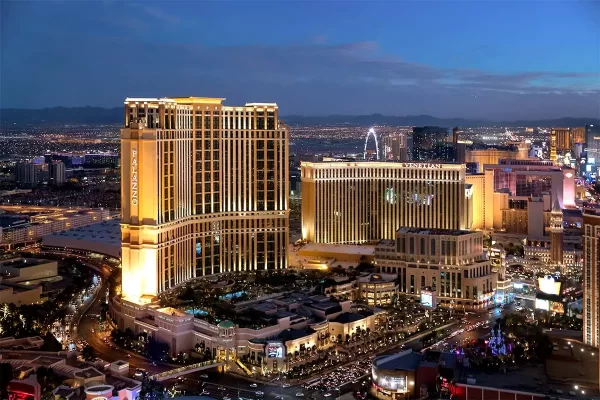by Danielle Curtis, exhibition director – Middle East, Arabian Travel Market & IBTM Arabia
The countries of North Africa are once again attracting attention from global business event organizers, with several city destinations in the region emerging as hot spots for all types of tourism, and MICE business is high on the agenda.
The region’s tourism revival is the product of focused economic strategy and private investment. After a tumultuous period of political upheaval a decade or so ago, stability has returned and national governments in North Africa are now seeking to build stronger and more diverse economies. Tourism is playing a significant part in increasing prosperity and is seen as a key multiplier on all other sectors of the economy.
For some major countries in the region, the number of foreign tourists is increasing substantially, for example, visits to Tunisia rose by 23 percent in 2017, compared with the previous year, according to official data. The country performed far better than its neighbor Algeria, which saw just 3.1 percent rise in visitors.
In Morocco, the government’s long-term national development plan Vision 2020 puts tourism at the heart of economic development, using it as an important tool for regional improvement and development. The plan seeks to make the most of the various territories, population groups, and other assets of the country in a sustainable way. Through Vision 2020, Morocco aims to double the size of the tourist sector and boost revenues to $15 billion annually by the end of the decade.
Though the strategy has seen a steep rise in revenues from tourism, from 64.2 billion dirhams (about $17.4 billion U.S. dollars) in 2016 to 71.9 billion dirhams (about $19.6 billion U.S. dollars) in 2017, business travel contributes less than 5 percent of this. Large specialized cities such as Marrakesh, Casablanca, Fez and Agadir generate 15 percent to 20 percent of the county’s MICE revenues and to capitalize on this, one of the first projects is a new congress center in Agadir, a city along Morocco’s southern Atlantic coast, which is planned to open in 2019.
Morocco is no exception, investments in infrastructure, improved transport systems and high-tech conference and convention centers are taking place throughout the region, and all have the aim of improving the balance between leisure and business travel, with attracting MICE business very much in focus.
In 2016, CIC Alger (Center International de Conferences Alger) which claims to be North Africa‘s most exciting new venue for exhibitions, conferences, meetings and events, opened in the Algerian capital, Algiers. This first-class international conference and exhibition center offers a large number of meeting rooms, exhibition halls, world-class shopping, a variety of restaurants, on-site TV studios, parking facilities and an auditorium which can seat 6,000 guests. Algeria has ambitions to rise up the global foreign visitor ranks by doubling its current visitor numbers by the year 2027.
In the Tunisian capital, Tunis, investment and development is focused on big name hotels, such as the recently opened Movenpick Hotel du Lac Tunis, with a 750-seat ballroom, and the Four Seasons Hotel Tunis. An Anantara resort is set to open in 2019, near the desert oasis of Tozeur, and the Six Senses Gammarth is also expected to open in the city soon.
Rather than government strategy and investment, the hotel operators are confident that stability is the route to tourism success.
“I see corporate segments growing in Tunis, and with our strong presence, we are confident of catering to this, despite the large supply increases,” says Rami Moukarzel, VP development & acquisitions MENA, Louvre Hotels Group. “Stability, in terms of security and economics, will drive further growth bringing back the MICE segments, regional travel and returning corporate and leisure European travelers.”
Tunis already has well-established conference, meeting and exhibition venues, including Kram Exhibition Center with 40,000 square meters of covered space and the International Congress Center of Utica, which can accommodate up to 1,500 delegates across six rooms.
The trend for visitor numbers to be split heavily in favor of leisure visitors in Morocco, does not follow through in all other markets in the region. Egypt’s experience is almost the opposite, with the business tourism and MICE sectors representing are a far larger proportion of the country’s visitors.
According to a market study made by Colliers International, the total number of tourists to visit Egypt in 2017 was around 7.2 million. This is a huge leap forward in comparison to the 5.3 million tourists in 2016 and Egypt’s overall tourism revenues jumped 123 percent year over year to $7.6 billion. The research indicated that 67 percent of the tourists in Egypt visit for corporate/business purposes, 20 percent for MICE, and just 13 percent for leisure.
Egypt’s capital, Cairo, is the largest city in the Middle East region and one of the most important in the entire Arab world, so it’s hardly surprising that it’s such a vibrant hub in the region’s business events scene.
In addition to visitor number increases, hotel occupancy levels in the country doubled in 2017 compared to 2016. Given the fact that the majority of the tourists visit for business purposes, hotels in Cairo, where Egypt’s leading business events venue, EECA, is located next to the bustling central business district, were the ones witnessing most of the occupancy level increases.
EECA comprises three major buildings; the convention halls, banquet hall and the exhibition complex, with a series of meeting rooms, ranging from smaller spaces suitable for events for up to 50 people, to an auditorium accommodating 2,500 persons. The center also features five exhibition halls, offering total exhibition space of 20,000 square meters.
The tourism increases across the major countries of North Africa are born largely from the return to political and social stability. The region’s governments recognize that business tourism and events are fundamental to the growth of their economies and the MICE industry is a great opportunity to display the diversity of North Africa’s landscape, cultures, commerce and industry, to a highly influential audience. It’s an exciting time, creating more opportunities and choice for the international event organizer.
IBTM, part of Reed Travel Exhibitions is the world’s leading showcase for the meetings and events industry (also known as MICE) with a portfolio of five global and regional events providing business solutions on five continents. They include IBTM World, IBTM Arabia, IBTM Africa, IBTM Americas and IBTM China. For more info, visit ibtmevents.com.
Reed Travel Exhibitions (RTE) is the world’s leading travel and tourism events organizer, with a wide-ranging portfolio of 22 international events in 13 countries throughout the Americas, Europe, the Middle East, Asia Pacific and Africa. Its market-leading, business-to-business events cover all elements of travel and tourism, including leisure travel, luxury travel, meetings, events, incentives and business travel, as well as golf travel. For more info, visit reedtravelexhibitions.com.




























